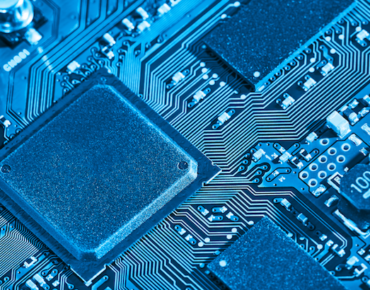Microsoft Unveils AI Chip

(Raimundas/Shutterstock)
Microsoft said this week it is developing a new version of an AI-based coprocessor for implementing "deep" neural networks expected to be incorporated into augmented reality goggles.
The second version of the HoloLens holographic processing unit (HPU) crunches information gathered by sensors, including Microsoft's head-tracking cameras and inertial measurement units, the electronic devices such as accelerometers and gyroscopes that record force or angular rates.
Microsoft (NASDAQ:MSFT) said this week the HPU would be used to process AI sights and sounds in it HoloLens augmented reality (AR) headset. The chip would reduce latency by enabling local processing rather than sending data to the cloud.
"Although we have seen large improvements in the accuracy of recognition as a result of deep neural networks, deep learning approaches have two well-known challenges: they require large amounts of labeled data for training, and they require a type of compute that is not amenable to current general purpose processor/ [and] memory architectures," researcher Mark Pollefeys noted in a blog post.
Microsoft's HoloLens unit initially addressed these constraints with FPGAs, but advances were limited to current cloud computing fabrics.
In an effort to leverage low-latency local computing, researchers created custom silicon in the form of an HPU to process sensor and other AR information. The company claims the new version of the chip represents nothing less than the first self-contained holographic computer.
The HoloLens unit this week announced the second version of its HPU is under development and will incorporate an AI coprocessor to natively implement deep neural networks. It demonstrated a prototype of the latest version running live code implementing an AR scheme for a robotic hand.
Along with reducing latency, the local processing technique reduces power requirements. The approach combines computing, battery power, sensor and a display in a single HPU processor, the company claimed.
Microsoft is expected to incorporate the AI processor in the next version of its HoloLens AR goggles.
Meanwhile, Apple (NASDAQ: AAPL) and Google (NASDAQ: GOOGL) are reportedly also in the process of developing AI processing chips.
These chip efforts continue efforts by traditional software companies to bring processor development in-house as they seek to develop custom processors that can harness the potential of AI.
Related
George Leopold has written about science and technology for more than 30 years, focusing on electronics and aerospace technology. He previously served as executive editor of Electronic Engineering Times. Leopold is the author of "Calculated Risk: The Supersonic Life and Times of Gus Grissom" (Purdue University Press, 2016).











